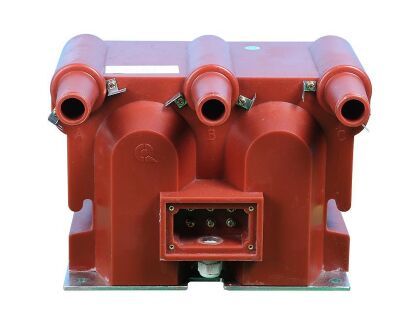The current transformer is actually a step-up transformer working in a short-circuit state. Because the principle of the current transformer is based on the principle of electromagnetic induction. First of all, it is composed of a closed core and windings. The number of turns in its primary winding is very small, and then it is strung in the current line to be measured, so it is often that all the current of the line flows through And the number of turns of the secondary winding is relatively small, so it is connected in series with the measuring instrument and the protection circuit.

In addition, when the current transformer is working, its secondary circuit is always closed, so the impedance of the coil in series with the measuring instrument and the protection circuit is very small, and its working state is similar to that of a short circuit. The current on the primary side is converted into a small current on the secondary side for measurement, and the secondary side cannot be opened.
The voltage transformer is a step-down transformer that works under no-load conditions(uses of the step-down transformer). And it is very similar to a step-down transformer, mainly used to transform the voltage on the line, and the main purpose of the transformer in changing the voltage is to be able to transmit electrical energy, so the capacity is relatively large, in general, it is used in kVA or It is calculated in units of megavolt-amperes.
The purpose of the voltage transformer to transform the voltage is mainly to supply power to measuring instruments and relay protection devices, to measure the voltage, power, and energy of the line, or to protect the valuable equipment, motors and motors in the line when the line fails. Transformers, therefore, the capacity of voltage transformers is very small, generally, only a few volt-amperes, tens of volt-amperes, and the maximum is no more than 1,000 volt-amperes.